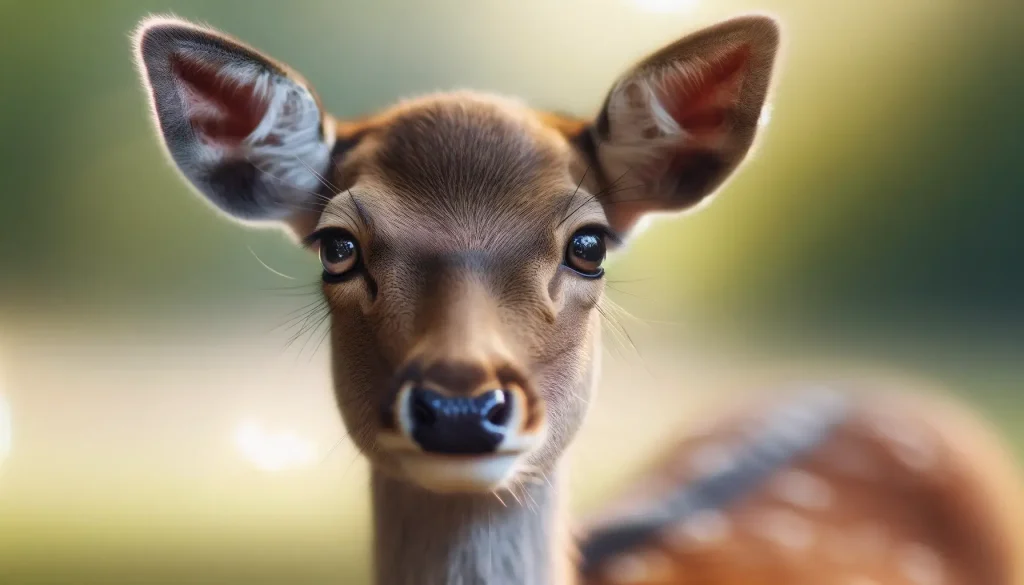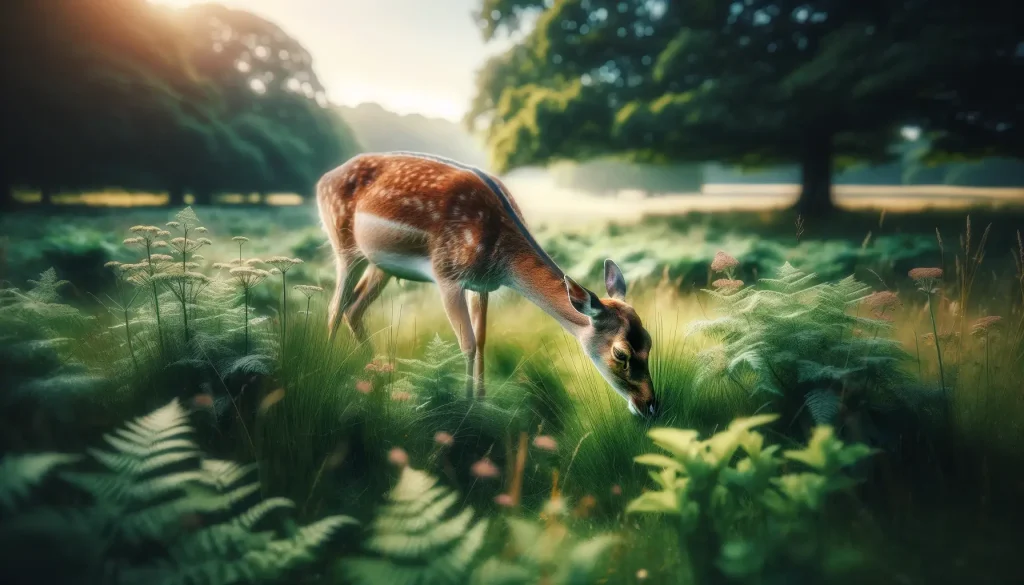
How to Care for Your Pet Deer
Keeping a pet deer is an uncommon but rewarding experience, requiring specific knowledge and dedication, especially in terms of diet and safety. Unlike traditional pets, deer have unique dietary needs and safety considerations that must be addressed to ensure their well-being. With an average deer consuming nearly 1 ton of food annually, primarily from browse including woody and stemmy plants, tailoring your pet deer’s diet to meet these requirements is crucial. Additionally, understanding the risks associated with deer, such as their involvement in over 1,656 vehicle collisions in Massachusetts alone during 2021 (according to AAA Northeast from Oh Deer), highlights the importance of safety in deer care. But how do you balance these needs while ensuring a healthy and safe environment for your pet deer?
To replicate a deer’s natural intake, focus on providing a variety of browse. This includes leaves from trees, shrubs, briars, and vines, which should make up the majority of their diet. Every day, a deer must consume about 6 to 8 percent of its body weight in food to maintain health. This high volume of food intake underscores the importance of an ample and diverse diet.
Keeping your pet deer safe involves both protecting it from potential harm and preventing it from causing accidents. With the high number of deer-vehicle collisions, it’s evident that roaming deer pose a significant risk to themselves and drivers. Ensuring your pet deer has a secure and sizable enclosure can prevent it from wandering onto roads and causing accidents.
But what specific items should be on your pet deer’s menu, and how can you create a secure living space for them? Let’s dive into the essentials of pet deer care, focusing on diet and safety tips that every deer owner should know.

FAQs About Pet Deer
When it comes to caring for a pet deer, there are countless questions that might pop up for both new and experienced owners. Here’s a collection of frequently asked questions to help guide you on your journey of pet deer care.
What should I feed my pet deer?
Deer thrive on a diet primarily consisting of browse. This includes leaves from trees, shrubs, briars, and vines. Given the volume they need to consume, which is 6 to 8 percent of their body weight daily, it’s key to offer a diverse and ample diet. This aligns with their natural intake and supports their health.
How do I keep my pet deer safe?
Creating a secure enclosure is vital to prevent your deer from wandering into dangerous areas, like roads, which could lead to accidents. Given the significant number of deer-vehicle collisions, ensuring your pet deer’s safety also safeguards drivers. A sizable, secure living space is essential for their well-being.
Are deer-vehicle accidents common?
Yes, deer-vehicle accidents are quite common, with over 1,656 recorded in Massachusetts in 2021 alone. This statistic underlines the importance of maintaining a secure environment for pet deer to prevent such incidents and promote safety for both the deer and drivers.
How much food does a deer consume annually?
An average deer consumes nearly 1 ton of food yearly. This substantial amount predominantly consists of browse, emphasizing the need for pet deer owners to provide a diet that mimics their natural habitat for optimal health.
Understanding the basics of deer diet and safety can greatly improve the well-being of your pet deer. With the right knowledge and dedication, you can offer a healthy and secure environment for your exotic pet.


Keeping Your Pet Deer Healthy and Happy
Understanding your pet deer’s needs is fundamental for their welfare. This section dives into those needs, focusing on nutrition and space requirements—key elements of a happy and healthy pet deer.
Feeding Your Deer Right
Your pet deer’s diet is mostly browse. Browse includes the leaves and stems of woody plants, shrubs, trees, briars, and vines. An interesting fact to note is that an average deer eats nearly 1 ton of food each year. This high intake rate means deer need a diet rich in variety and quantity. They should consume about 6 to 8 percent of their body weight daily. This diet mimics their natural feeding patterns and supports their digestive system.
Creating a Deer-Friendly Zone
Your pet deer’s safety is as crucial as its diet. Deer are curious and can wander, posing risks to themselves and others, especially on roads. The year 2021 saw 1,656 deer-vehicle collisions in Massachusetts, a clear indicator of the dangers wandering deer face. To prevent such incidents, a sizable and secure enclosure is mandatory. This enclosure should provide ample space for them to move around and prevent them from reaching unsafe areas.
Avoiding Deer-Vehicle Accidents
Keeping your deer off the roads doesn’t just protect them; it also vastly reduces the risk of deer-related vehicle accidents. With the notable rise in these accidents, having a secure habitat for your deer is not just beneficial—it’s essential. Strategies to safeguard against these incidents include establishing strong fencing and providing your deer with all the necessities within their enclosure to discourage wandering.
Keeping Your Deer Cozy
Did you know a deer’s fur not only serves as a camouflage but also plays a critical role in their health? That’s right. Their fur acts as an insulator during the cold months and as a cooling aid during the warmer seasons, thanks to its adaptability. This dual function is crucial for maintaining a healthy body temperature year-round.
But, it’s not just about temperature control. Fur also acts as a protective layer against various external threats such as pests and injuries. Brushing aside the misconception that deer might not require grooming, keeping an eye on their fur condition is vital. Checking for ticks and other parasites regularly can prevent the myriad of health issues these pests can cause.
To support your deer’s fur health, ensure their diet is rich in nutrients. Remember, a robust diet supports not just their overall health, but also maintains their fur in prime condition. The same principles of feeding for internal health apply here: a rich, varied intake of leaves, shrubs, and vines contributes to shiny and strong fur.
Another interesting fact is that deer shed their fur twice a year, transitioning between their thicker winter coat and the lighter summer coat. This process highlights the need for attentive care during these periods to help manage any discomfort and ensure the new coat comes in healthy.

Deer Diet and Safety
When looking at the life of a pet deer, their diet and safety rank as top priorities for their owners. Since an average deer grazes on about 1 ton of food annually, understanding what constitutes this diet is critical. Primarily, a deer’s diet consists of browse, which is inclusive of woody and stemmy plants like trees, shrubs, briars, and vines.
Given that a deer must consume roughly 6 to 8 percent of its body weight daily to stay healthy, variety and volume in their diet cannot be overlooked. This daily intake is vital for maintaining their health, energy, and overall well-being.
When it comes to safety, preventing deer-vehicle accidents is a pressing issue. In 2021, there were 1,656 reported deer-vehicle collisions in Massachusetts alone. Such numbers highlight the need for secure and appropriate enclosures that keep pet deer away from potential dangers, like nearby roads.
A secure enclosure functions more than just a boundary; it’s a safe haven that prevents your deer from wandering into hazardous territories that pose risks not only to them but also to people. Ensuring that this enclosure is robust and spacious allows deer to explore and remain active without the danger of wandering into unsafe areas.
Here are some practices to ensure your pet deer’s diet and safety:
- Variety in Diet: Include a wide range of browse in their diet to mimic natural feeding habits.
- Secure Perimeter: Install strong, high fences that deter deer from leaving designated safe zones.
- Regular Health Checks: Monitor their health to catch any diet or safety-related issues early.
- Educate Yourself: Stay informed about the best practices in caring for pet deer.
Addressing these areas thoughtfully ensures that your deer leads a healthy, secure, and fulfilling life. Remember, the care you provide shapes their quality of life significantly.
Beginner Guide to Raising Quail at Home
What are the Signs of a Dog Concussion?
What Causes Your Dog’s Ears to Smell Bad?
When your dog’s ears start to emit an unpleasant odor, it might leave you puzzled…
Methimazole Treatment for Cat Hyperthyroidism
Methimazole plays a crucial role in managing feline hyperthyroidism, a condition marked by an overactive…
Got Hummingbirds in your Backyard? Here’s How to Care for Them.
Why Does Your Cat Pee Outside the Litter Box?
Cat’s Litter Box Issues It’s not uncommon for cat owners to face the frustrating dilemma…




